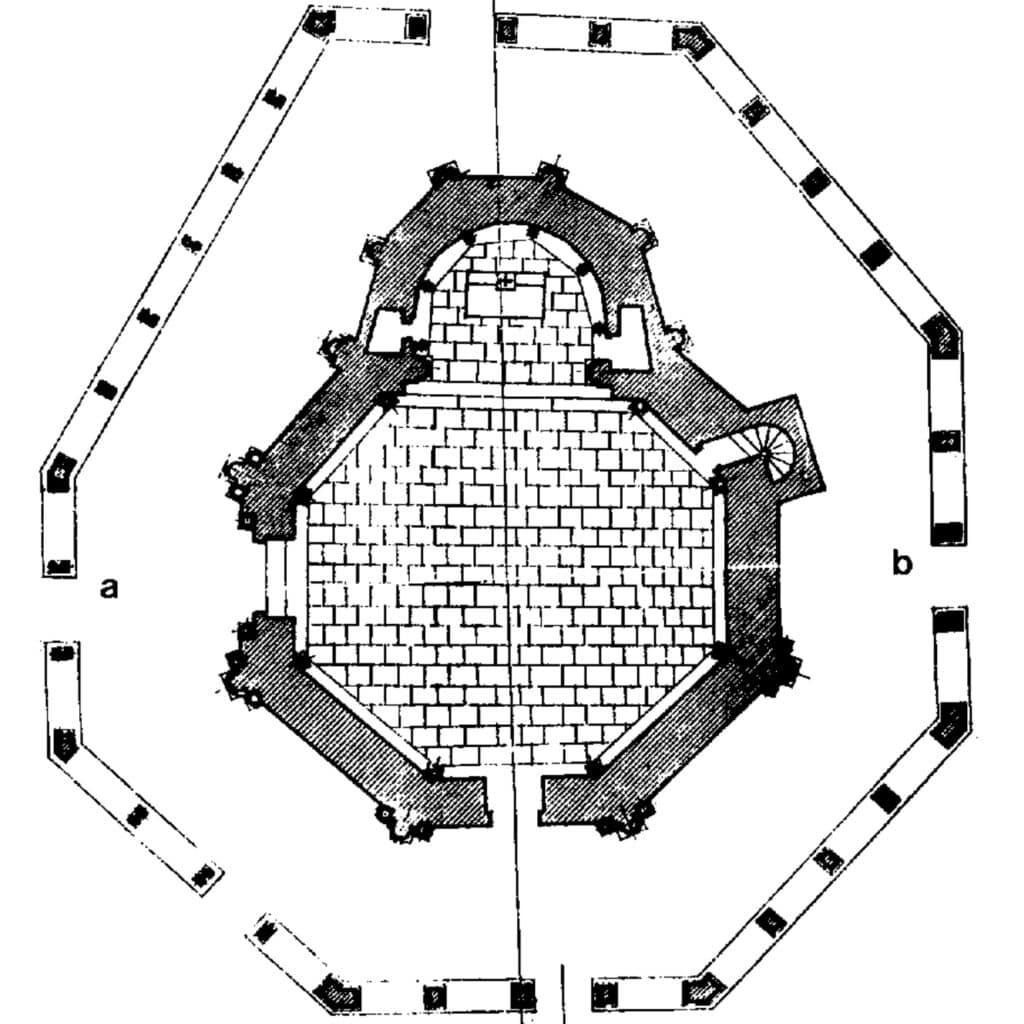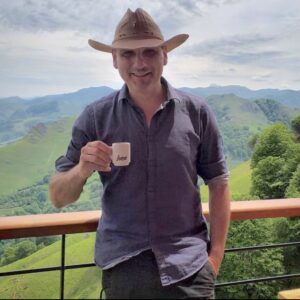Here are some of our favourite places along the trail where history, mystery and fantasy come together.
Eunate
In Navarra on the Camino Aragonés just before it joins the French Camino
The Romanesque Chapel of Santa María de Eunate dates back to the 12th century and is one of the highlights of the whole Camino. The chapel presents an unusual, albeit not unique, octagon design that was inspired by the Holy Sepulchre in Jerusalem and was built by the Knights Templar.
However, what makes Eunate intriguing is that the church is not a regular octagon and all the walls have different sizes. Medieval architects knew how to draw a regular octagon, so, why they did this remains a mystery.
San Antón Monastery Ruins
Just before Castrojeriz on the French Camino.
The Gothic ruins of the monastery date back to the 14th century and are that are left of a once striving community of Antonines. The community was well known for providing shelter and hospitality for pilgrims, and for being able to cure the widespread medieval disease known as Saint Anthony’s Fire.
However, what makes the ruins intriguing is that the in the 20th century a road was built on top of the former Camino trail. This means that automobiles on their way to or from Castrojeriz now go through the monastery’s arches.
The Chickens at Santo Domingo de la Calzada
In the Cathedral of Santo Domingo de la Calzada on the French Camino
The magnificent cathedral in Santo Domingo de la Calzada dates back to the 12th century and has welcomed pilgrims since then.
However, what makes the cathedral exceptional are the white rooster and hen that are kept in a cage inside, making it the only church in the Catholic world that houses live animals. The chickens commemorate one of Camino’s most renown legends that took place in the town. The chickens are bred in the nearby Confraternidad (Brotherhood) de Santo Domingo de la Calzada’s hostel and spend only a couple months in the cathedral cage when they are relieved by another set.
The Wine Fountain at Bodegas Irache
In Ayegui, just after Estella on the French Camino
Despite being a lesser known wine region in Spain, Navarra produces its share of fine wine, and Bodegas Irache (Irache Winery) is one of the many wineries you walk by as you cross southern Navarra. By the winery stands the impressive Monastery of Irache with its remarkable Renaissance cloister.
However, what makes the Irache ensemble stand out is the outdoor wine fountain that the winery has installed for pilgrims. The winery warns pilgrims that they should drink in moderation and only if they are eighteen or older. Happily, the wine is free, there is a live webcam and even a water fountain to wash down the wine. Cheers!
The Cruz de Ferro
At the Foncebadón Pass, just after Foncebadón on the French Camino
The highest point on the classic French Camino is not found in the Pyrenees but at the Foncebadón Pass in the León Mountains at 1510 meters/5000 feet. This pass takes you down into León’s westernmost valley called El Bierzo before you enter Galicia.
However, what makes the pass memorable is the immense pile of stones and the cross that are found there. Pilgrims and travellers since time memorial have left a stone here in remembrance and/or spiritual purification. The pile continues to grow as pilgrims continue to leave their stones here as they make their way westward.
The Castromaior Celtic settlement
Just after the village of Castromaior and about two hours from Portomarín on the French Camino
There are thousands of Celtic settlements documented across Galicia that date back more than 2000 years of which only a handful have been excavated. The Celts were the tribe that had settled this part of Spain before the Roman arrival and conquest of the Iberian Peninsula.
However, what makes this settlement stand out is that it has been partially excavated and is open to visitors. Indeed, at the moment there are no guards or entrance, and pilgrims can wander freely amongst the remains. Note that a very short and easy detour from the Camino trail is required to visit Castromaior.


















